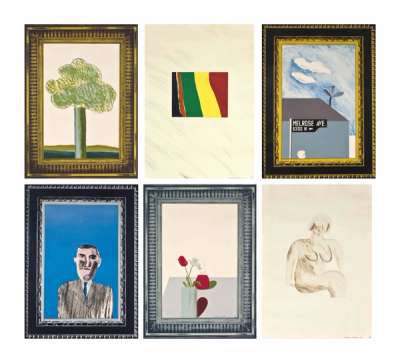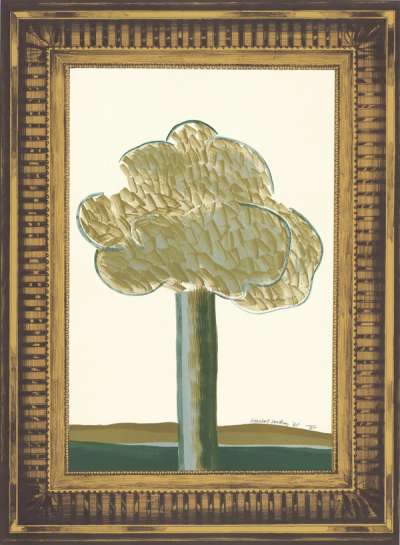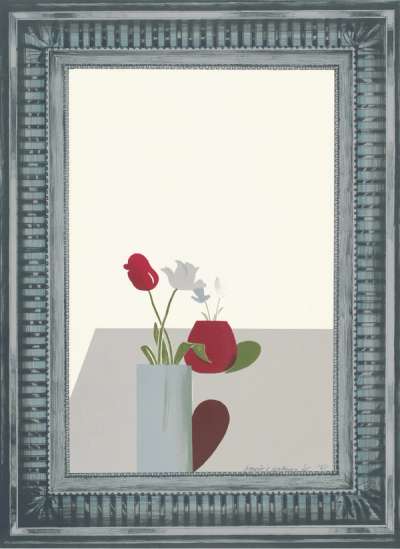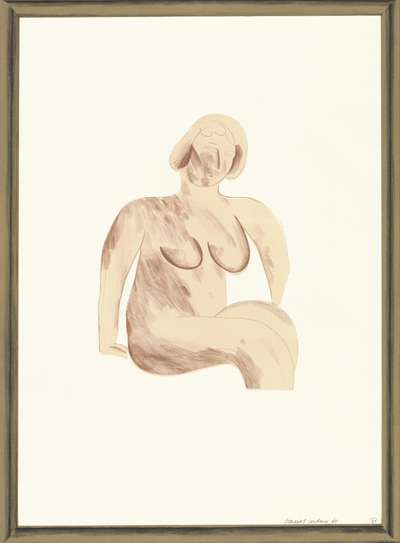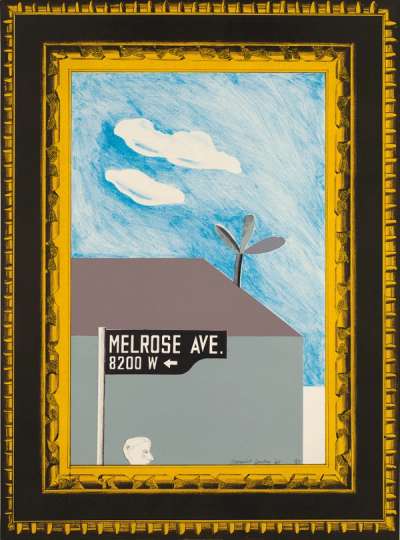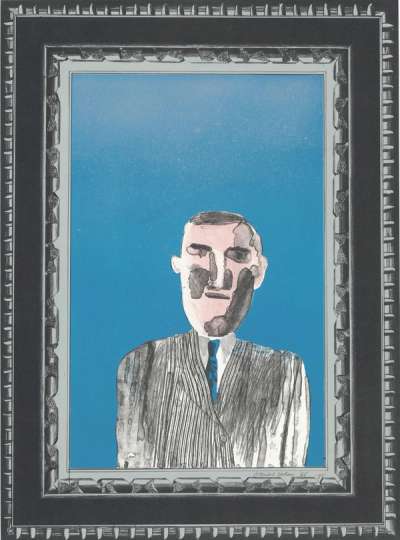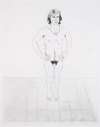A Hollywood Collection
David Hockney’s 1965 A Hollywood Collection is the first series of lithographs produced with printer Ken Tyler at the Gemini G.E.L. workshop in the city. Here Hockney plays with our perception of art and asks us to consider how it is framed and reframed, produced, and reproduced.
David Hockney A Hollywood Collection For sale
A Hollywood Collection Value (5 Years)
With £17702 in the past 12 months, David Hockney's A Hollywood Collection series is one of the most actively traded in the market. Prices have varied significantly – from £250 to £26395 – driven by fluctuations in factors like condition, provenance, and market timing. Over the past 12 months, the average selling price was £4425, with an average annual growth rate of 2.26% across the series.
A Hollywood Collection Market value
Auction Results
| Artwork | Auction Date | Auction House | Return to Seller | Hammer Price | Buyer Paid |
|---|---|---|---|---|---|
 Picture Of A Pointless Abstraction Framed Under Glass David Hockney Signed Print | 14 Nov 2025 | DuMouchelles | £1,955 | £2,300 | £2,850 |
 Picture Of A Landscape In An Elaborate Gold Frame, 2 David Hockney Signed Print | 25 Jun 2025 | Bonhams New Bond Street | £10,625 | £12,500 | £16,000 |
 Picture Of A Simple Framed Traditional Nude Drawing David Hockney Signed Print | 19 Sept 2024 | Phillips London | £1,743 | £2,050 | £2,800 |
 Picture Of Melrose Avenue In An Ornate Gold Frame David Hockney Signed Print | 15 Nov 2023 | Sotheby's Online | £7,225 | £8,500 | £11,500 |
 Picture Of Portrait In Silver Frame David Hockney Signed Print | 15 Nov 2023 | Sotheby's Online | £4,675 | £5,500 | £7,500 |
 A Hollywood Collection (complete set) David Hockney Signed Print | 28 Oct 2023 | Christie's New York | £21,250 | £25,000 | £35,000 |
 Picture Of A Still Life That Has An Elaborate Silver Frame David Hockney Signed Print | 6 Mar 2022 | McTear's | £2,975 | £3,500 | £4,350 |
Sell Your Art
with Us
with Us
Join Our Network of Collectors. Buy, Sell and Track Demand
Meaning & Analysis
‘A Hollywood Collection’ is the first series of lithographs Hockney produced with printer Ken Tyler at the Gemini G.E.L. workshop in LA 1965. While most artists were moving to New York, Hockney chose the West Coast after being inspired by the shadows in Hollywood films – a move he has compared to ‘Van Gogh going to Arles’. Dating to 1965, ‘A Hollywood Collection’ is the first series of lithographs Hockney produced with printer Ken Tyler at the Gemini G.E.L. workshop in the city.
The series can be seen as a microcosm of Hockney’s entire oeuvre; his love for nature is represented in the trees in Picture Of A Landscape In An Elaborate Gold Frame and Picture Of Melrose Avenue In An Ornate Gold Frame – which also represents his love of modernist architecture and road signs – while his fascination for the still life as subject is encapsulated by Picture Of A Still Life That Has An Elaborate Silver Frame. Finally, one of his most enduring subjects, the portrait, is represented by Picture Of Portrait In Silver Frame and his penchant for bold colours is shown in Picture Of A Pointless Abstraction Framed Under Glass.
All this is wrapped up in his playful attitude to the history of art which sees him adding a trompe l’oeil frame to these subjects in order to add a meta layer of commentary on them. Each work is described as a ‘picture of’ as if Hockney were merely copying a painting or print already in existence – in this case a work that belongs in the fictional collection of a Hollywood star. Here Hockney, like many masters before him, is playing with our perception of art and asks us to consider how it is framed and reframed, produced and reproduced, by calling on the motif that recurs frequently in art history, the picture within the picture. But here Hockney takes the effect one step further, as with his earlier work, Play Within a Play where he paints the image of a tapestry under a pane of glass.
